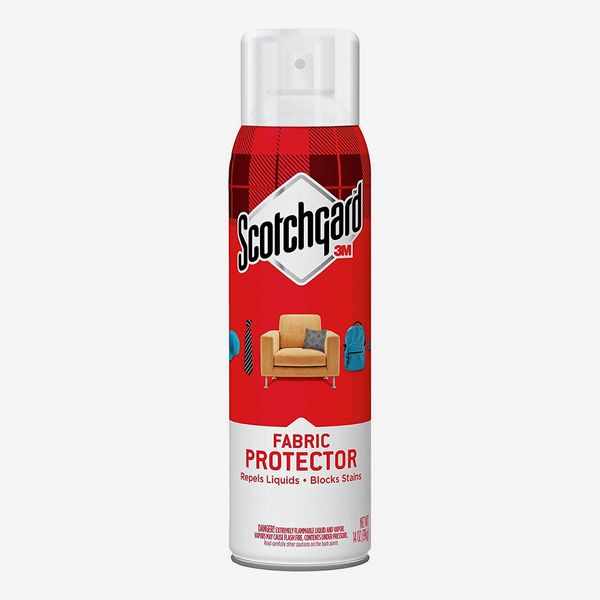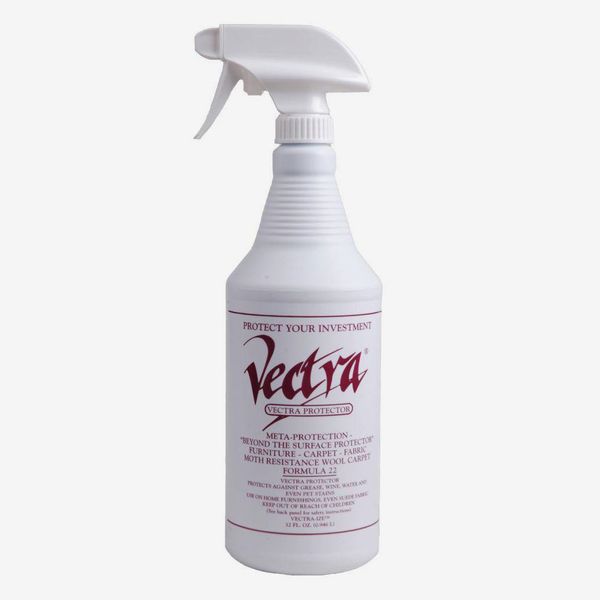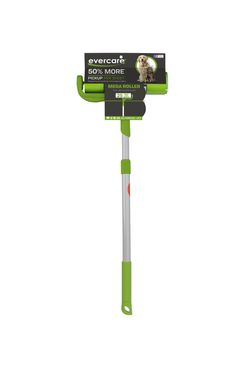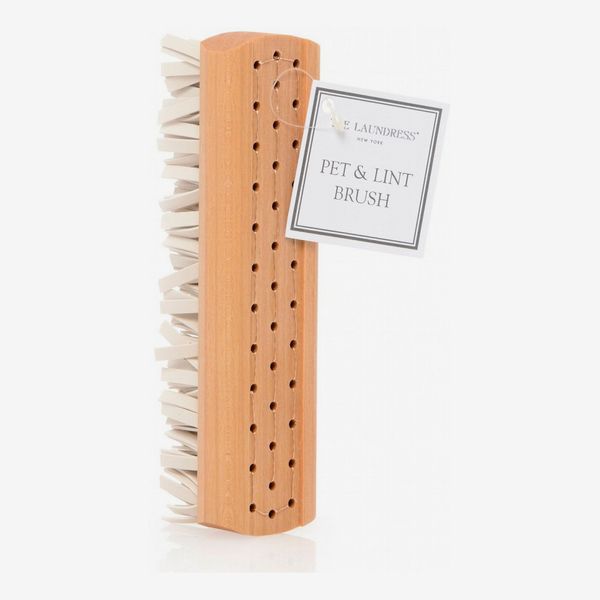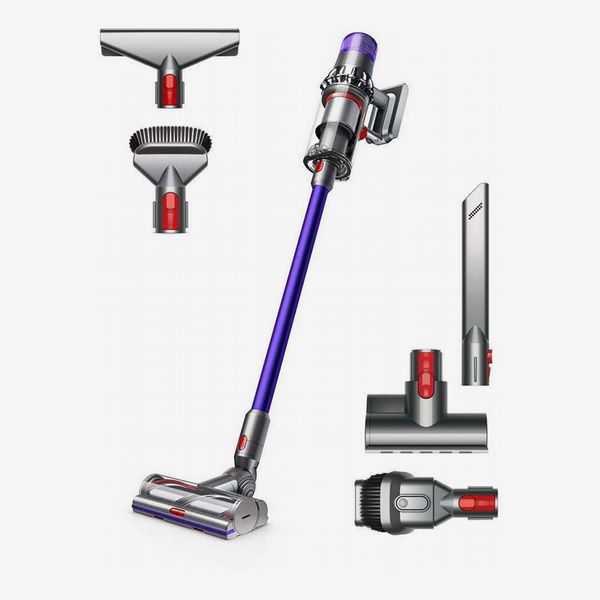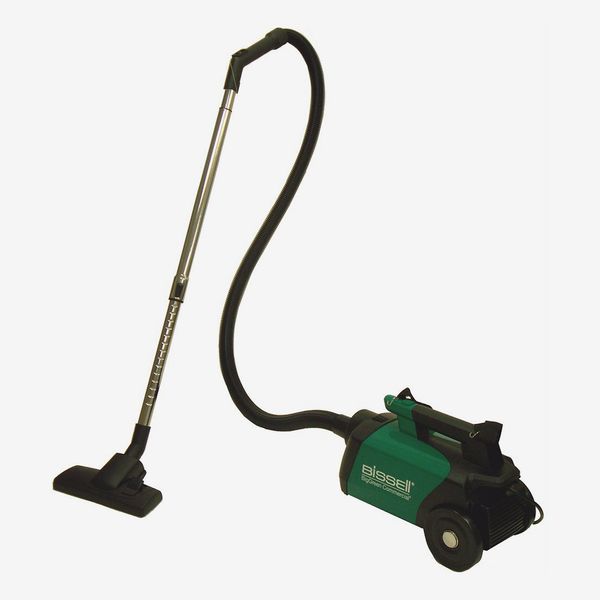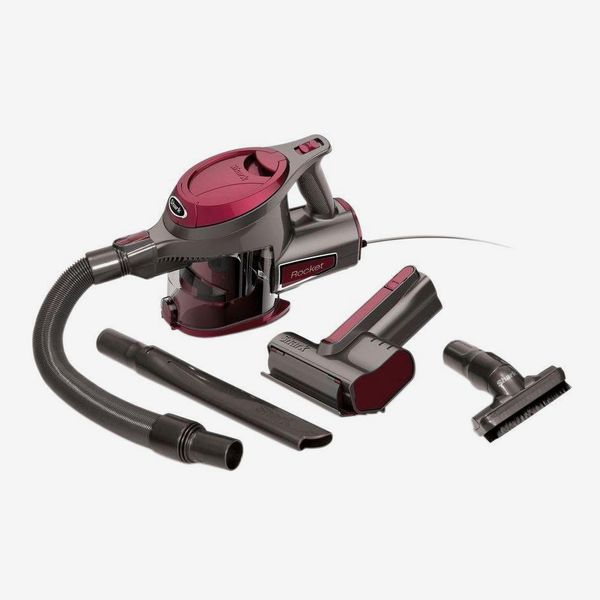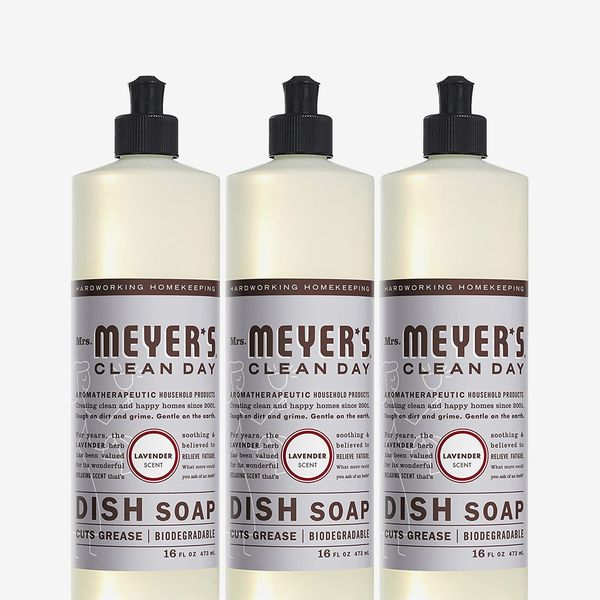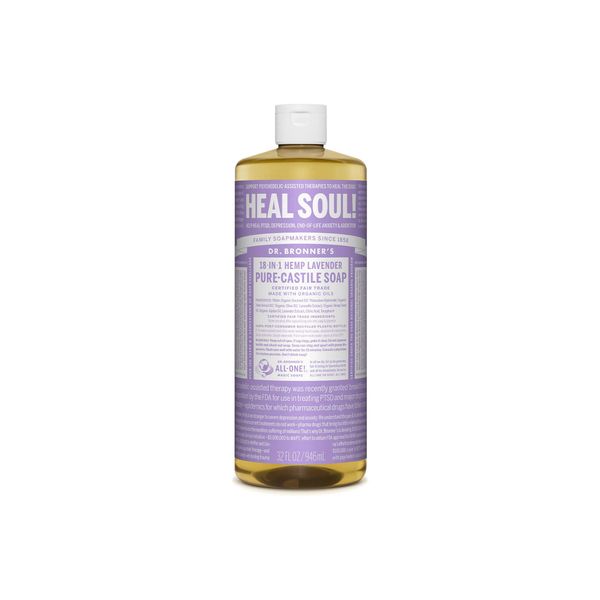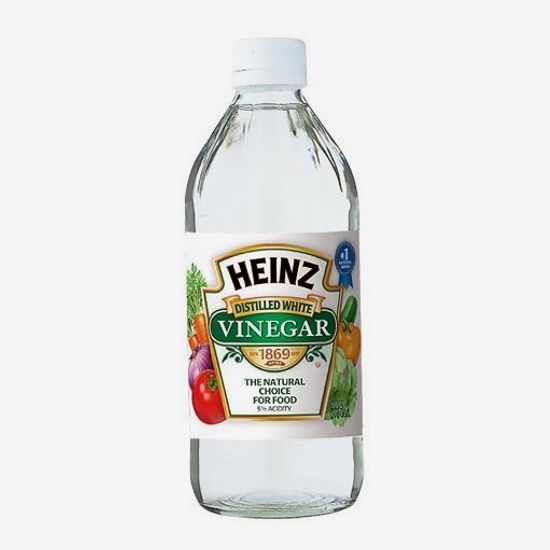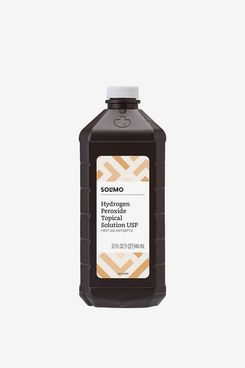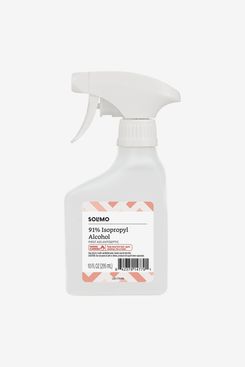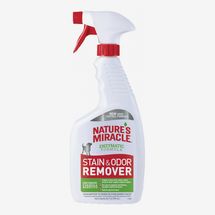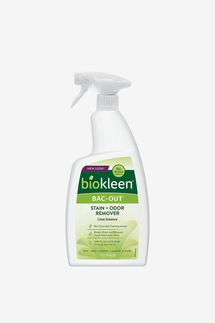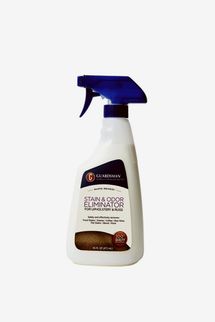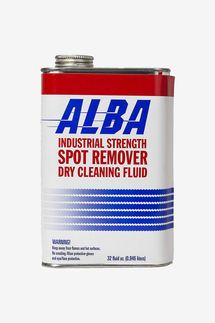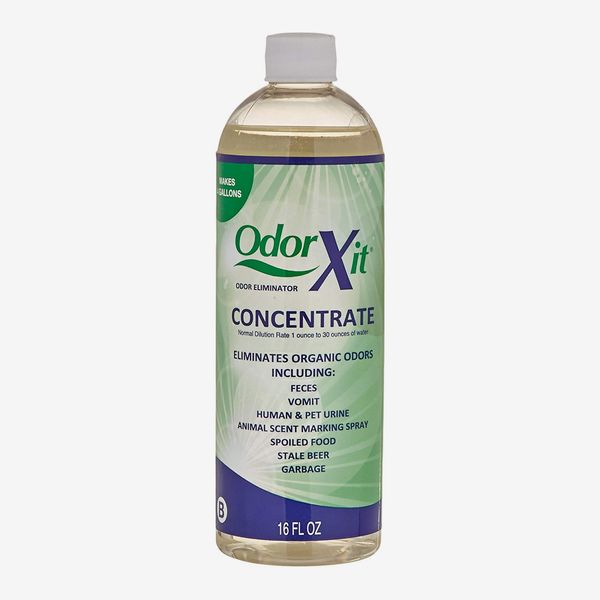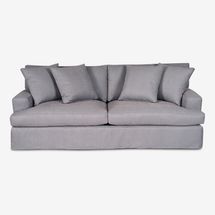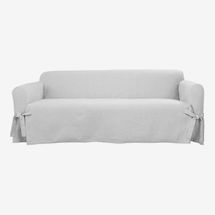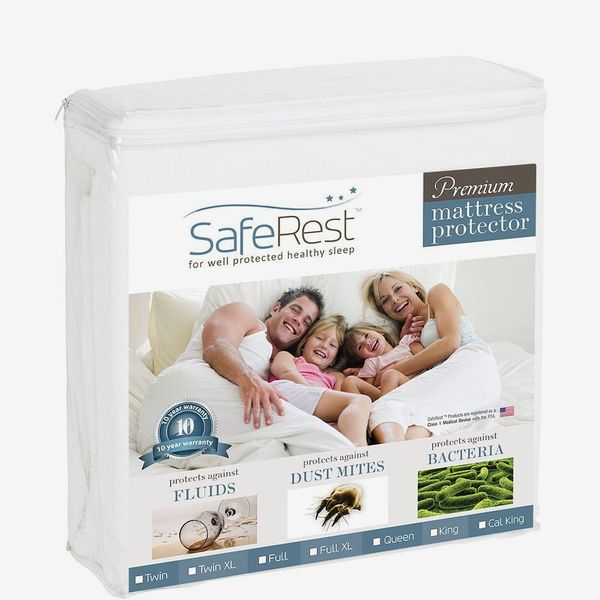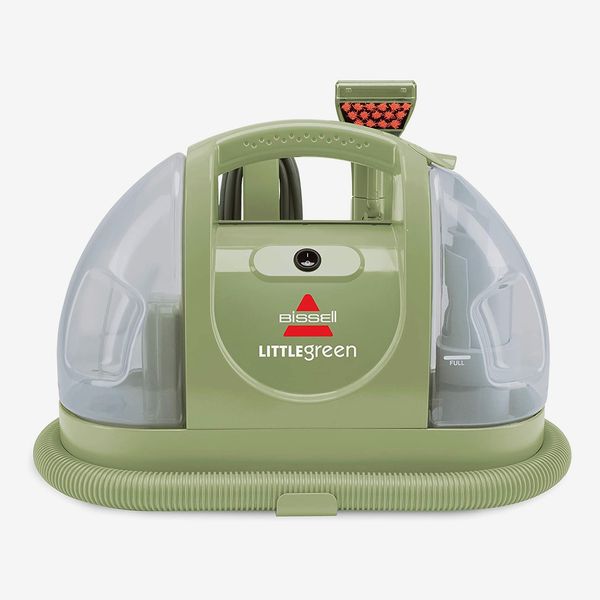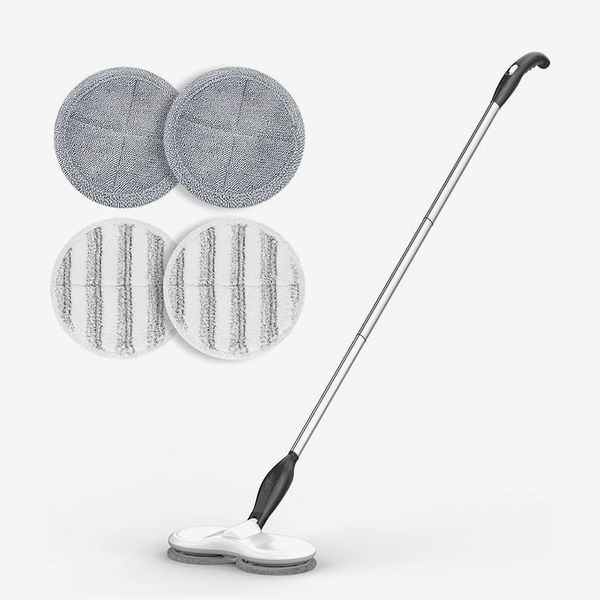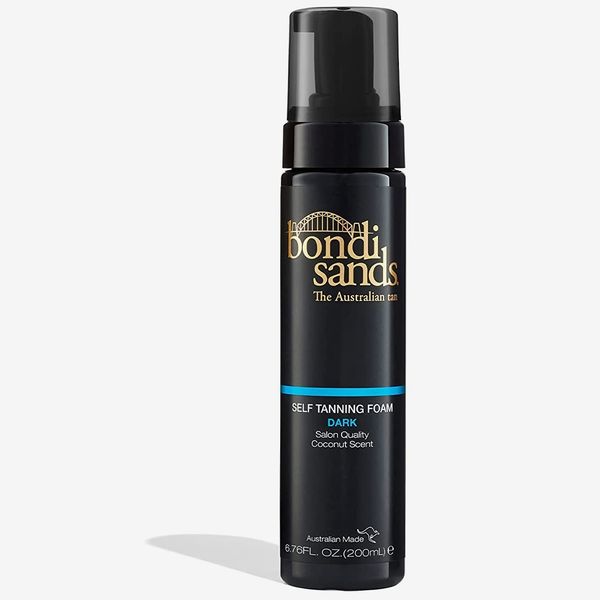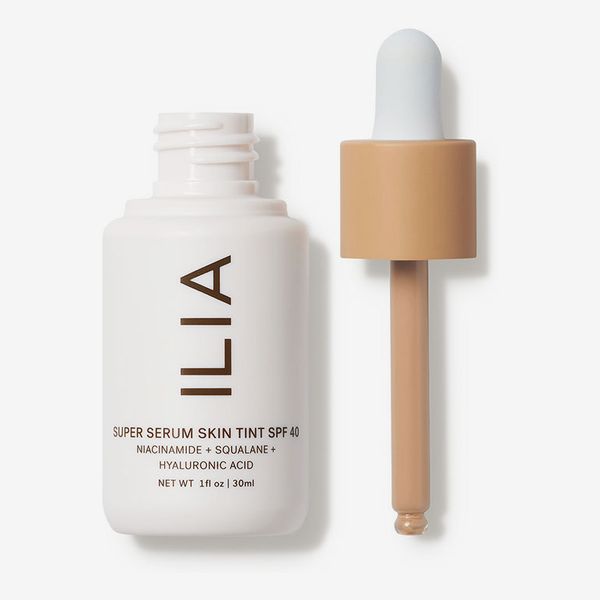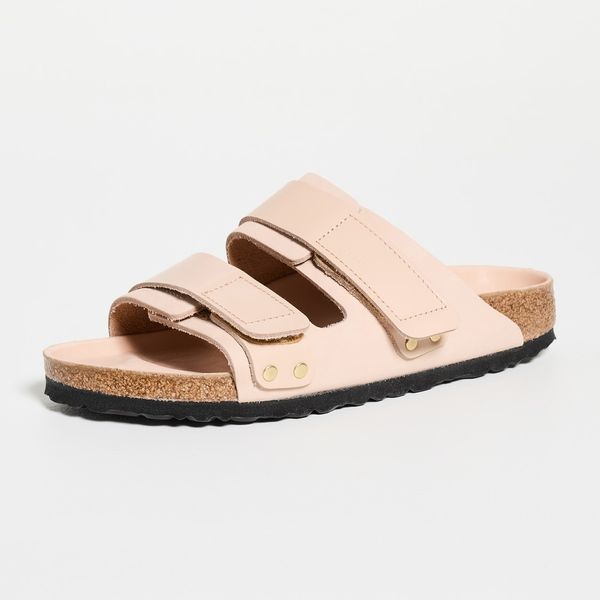
In the years since our former writer Lori Keong wrote about the best ways to protect her dream upholstered couch from dirt, stains, and city grime, a lot has changed in the world of fabric cleaning. So to keep up with the advancements, we spoke with even more experts to confirm the original wisdom in this story and uncover any new cleaning methods they recommend.
The soft pink velvet couch of my dreams recently materialized in my life: an on-trend, secondhand West Elm sofa that is miraculously stain- and dirt-free. I love it like my own child and paid a small fortune to buy it, too, but given my anxiety and its “pristine-ness,” it’s already giving me issues. The main one being that I haven’t been doing much sitting on it. I refuse to let it be besmirched by my subway clothes, for starters — if you were a regular on the A train, you would too. And the idea of having guests over who might want to sip and snack on it? Unthinkable.
I could wrap it in a plastic cover like it’s an artifact — defeating the point of owning anything velvet — or heed my mom’s advice to stock up on stain remover. But really, I just want to find a middle ground that lets me enjoy my couch without wearing kid gloves. Seeing as velvet couches are all the rage, I imagine I’m not the only one searching for solutions, so I turned to upholsterers and furniture-cleaning experts for advice on how to protect fabric or upholstered furniture from stains (and treat the inevitable ones).
Pretreat it with an upholstery protector
Maybe your couch is velvet too. Or maybe it’s upholstered in an equally fragile fabric like linen, or it’s a mid-century gem you found on FirstDibs. Even if it’s covered in something specifically designed to resist stains, like microfiber, taking a proactive stance toward keeping it clean will increase its life expectancy. Nearly all the experts we spoke to agree that the best way to minimize stains on fabric furniture is to pretreat it with an upholstery protector.
Scotchgard was the product mentioned most often, with six of the 16 experts we consulted recommending it by name. According to Dean Davies, a professional upholstery and carpet-cleaning technician at U.K.-based Fantastic Services, “Scotchgard provides reliable protection against spills and stains by not letting them settle on the surface of your furniture, and it’s totally safe to use on delicate fabrics such as silk and wool.” The directions are fairly simple: You just spray the fabric protector on the couch from about six inches away until the entire surface area is covered. If you’re buying a new couch, several experts, including Karen Larkin of Belle Home Housecleaning in Connecticut, suggest first checking with the manufacturer to see if it will be pretreated with protectant before delivery. If not, Larkin agrees with Davies that applying it yourself is easy enough. “You just want to be smooth about it and keep moving as you’re spraying it to avoid any areas becoming saturated,” she says.
Even if you or a retailer pretreats your upholstered couch with a stain protectant, Sonny Cohen, the owner of New York–based PureGreen Carpet and Upholstery Cleaning, still recommends having it professionally cleaned by professionals at least once a year. According to Cohen, those annual cleanings help maintain the structure of your couch and keep it looking newer for longer. After each one, he recommends adding your own fabric protector, which typically lasts about a year on a couch that sees regular use. “It will basically make sure that stains don’t become permanent, so when you spill a glass of wine on the fabric, or when food or pet stains lie on the surface of the fabric, you’re able to blot it away with a white rag,” he says.
Both Cohen and Melissa Maker, whose YouTube channel, Clean My Space, boasts more than 1.3 million subscribers, use exclusively “green label” stain protectors that are free of major toxins and carcinogens. Maker suggests a green protectant called Vectra, which is similar to Scotchgard but made with gentler ingredients. She says it’s the leading choice for green furniture protection because it’s silicone free, fluorocarbon free, and safe for everything from suede to microfiber.
Regularly vacuum (or brush) it to remove dust, crumbs, and pet hair
Once your couch has been treated with a fabric protector, you’ll need to begin regular maintenance to remove dust, crumbs, and pet hair. All of the experts we spoke to recommend vacuuming your couch on a weekly-to-monthly basis depending on the level of use. And if you have pets, several of our experts suggest manually collecting excess fur from your couch in addition to vacuuming.
Because the buildup of dust and hair can affect how grubby your couch looks, Davies, Larkin, and Harriet Jones, a cleaning and maintenance supervisor for Go Cleaners London, recommend using a lint roller for quick superficial cleaning. Davies and Larkin both recommend this one from Evercare. “A lint roller is extremely handy when you have to remove pet hair from the couch. This one has a long handle and a convenient roller, which collects hairs with ease,” says Davies. In a pinch, however, Larkin and Jones both suggest using things you may already have at home, like yellow latex dishwashing gloves, a clean and dry kitchen sponge, or even dryer sheets to remove excess pet hair. “If you take a yellow latex glove and run it across the surface of your couch, the pet fur will form a little ball so you can just pick it up and throw it away. There are specialty items you can buy at pet stores that will do the same thing, like little rubber combs, but you really don’t need that,” says Larkin. Dryer sheets and kitchen sponges can be used in the same way to efficiently collect pet hair.
Those who prefer a more compact manual option may want to consider this brush from Strategist-approved cleaning-supply brand the Laundress. It has a sturdy wooden handle with rubber bristles that collect pet hair and lint using static, and it was previously recommended to us by makeup magnate Bobbi Brown, who uses it to clean the delicate upholstery in her pet-friendly hotel, the George, in New Jersey.
For a deeper clean to remove hair, dust, and dirt, Greg Shepard, the owner of Dallas Maids, says vacuuming weekly with a vacuum-brush extension is helpful too. Cohen recommends vacuums with a HEPA filter to improve the air quality of the house and pick up allergens from the fabric. Maker agrees on the importance of a HEPA filter and suggests vacuuming the cushions and any exposed foundation on a weekly basis. “I use my Dyson V11 with the small motorized attachment,” she says. Although you should vacuum high-traffic areas (like the spots you sit on) each week, Maker says you can do the base and other, less utilized parts less frequently, like every two weeks or once a month.
If the nearly $600 price tag of a Dyson vacuum makes it out of the question, Larkin recommends this more affordable Bissell commercial vacuum: “We use Bissell BGC3000 canister vacuums. The reason we use canisters instead of uprights is that you can get them all the way under furniture, and they come with lots of fabulous attachments.” Larkin and several other experts told us that using an upholstery-brush attachment is imperative. Larkin also mentioned the Bissell’s crevice tool, which is great for getting into those deep crevices under the cushions, and the little piece on the hose that you can open or close to adjust the suction strength.
Since we’re talking about cleaning furniture, a handheld vacuum may be a little easier to wrangle than a full-size model. Those who want something smaller should check out this handheld device from Shark, which Rose Shattuck, a founder of pet-accessories line the Foggy Dog, recommended in our roundup of expert-approved vacuums for pet owners. She calls it “super-portable” with “amazing suction for its size,” and she notes that this vacuum can even get “pet hair off of velvet.”
Have stain and odor removers at the ready for spot treatments …
Despite your best efforts to protect your couch, accidents happen. And when the inevitable coffee spill, spit-up, or pet accident does occur, you’ll want to be ready to clean it up and treat the area as soon as possible. Our experts overwhelmingly agree that the best stain removers are gentle and can be made from a mix of household ingredients. Depending on the type of stain, you’ll want to choose slightly different mixtures — more on that later — but everyone recommends stocking up on a handful of basic products.
Eight of our experts mentioned using a solution of dish soap diluted with distilled water (mineral buildup in tap water can leave a residue on your couch) for treating a wide variety of spills and stains. Larkin uses a cup of distilled water mixed with three-to-four drops of Trader Joe’s clear lavender-scented dish soap. She says it works well and leaves fabric smelling fresh. If you’re looking for something you can buy online, this lavender dish soap from Mrs. Meyer’s is a worthy, less expensive dupe. Here are Larkin’s mixing instructions: “In a cup, whisk the soap mixture until you have foam on the top and then take an upholstery brush” — she recommends one with soft bristles — “or microfiber cloth and dip it just in the foam. Next, you want to lightly swirl it on the fabric where the stain is. Then take a new clean microfiber cloth and press it down to suck up the moisture and stain into the cloth. Repeat the process a couple of times until the stain is gone, but make sure not to saturate the fabric.” Larkin and another three experts suggest finishing off with a small fan to dry the spot fully and quickly. And when it comes to microfiber cloths, a tool recommended by four of our experts, you’ll want to avoid any colored ones, lest the dye in the cloth transfer to your couch.
When tackling spills on delicate fabrics, Sabine H. Schoenberg, CEO of Smart Healthy Green Living, reaches for some trusty club soda and natural Castile soap. She suggests blotting first to remove any excess mess, then pouring a little club soda on the stain before gently blotting again to remove it. “If you need a little extra boost,” she says, you can try Castile soap for extra stain-lifting power.
Melissa Witulski, a home-cleaning expert at Merry Maids, adds white vinegar to her dish-soap mix because it cuts grease, disinfects, and neutralizes odors. She recommends combining two cups of distilled water, one tablespoon of dishwashing liquid, and one tablespoon of white vinegar. According to Diana Rodriguez-Zaba, the president of ServiceMaster Restoration by Zaba, white vinegar is the best thing to treat pet urine because it’s a natural, gentle disinfectant and is good at fighting odors. “The acetic acid in the vinegar will help lift the stain,” she says. Rodriguez-Zaba uses a diluted mixture of 50 percent vinegar and 50 percent distilled water, while Norma Capin, operations manager at Dallas Maids, mixes her solution for pet-urine stains with an equal part of club soda instead. Depending on the brand, club soda is slightly more acidic and salty than plain distilled water. Its low pH, like that of vinegar, is thought to help lift stains. Other experts, including Cohen and Shepard, also suggest a vinegar-and-water solution for stains and told us to apply it to a towel and gently blot at the stain, being careful not to saturate the fabric. “You can try distilled white vinegar mixed in a 50 percent ratio with slightly warm water, but don’t soak the fabric,” says Cohen. “That can be used as a homemade spot cleaner that won’t harm the fabric because it’s acidic in nature. It can be used to remove most fresh stains on the couch.”
If you still see a residual stain after trying both dish-soap and vinegar mixtures, Rodriguez-Zaba, Leanne Stapf, the COO of the Cleaning Authority, and Joshua Miller, the director of training at Rainbow International Restoration, all suggest using diluted hydrogen peroxide to lift stubborn stains (like those caused by coffee, tea, wine, and grape juice). Hydrogen peroxide has some natural bleaching properties, making it an effective way to treat stains from dark or colored foods. Because of those properties, however, Stapf, who uses a mix of hydrogen peroxide and dish soap to clean red-wine stains, warns that it should be used only on light fabrics or tested in an inconspicuous area first. When it comes to darker fabrics, Stapf recommends blotting the stain and then sprinkling with salt to absorb any remaining liquid. She suggests repeating the process several times until the stain is fully gone and then blotting with diluted water to rinse.
“Using any type of clear alcohol (vodka, rubbing alcohol, etc.) works like magic too,” says Shepard. It’s a trick he learned from a professional carpet cleaner. Here’s how it works: You spray a bit of alcohol on the couch after vacuuming and blot the stain with a cloth or towel. “I’m amazed at how well it removes even the most stubborn stains,” he says. Stapf suggests using alcohol for ink stains, while Capin says the combination of alcohol and oils in makeup-remover wipes makes them perfect for removing stains from leather and vinyl couches. Patric Richardson, the self-proclaimed Laundry Evangelist, also recommends rubbing alcohol for removing stains from “dry-clean only” clothes.
… And a more powerful cleaner for grease, bodily fluids, and other, tougher stains
Certain food and bodily-fluid stains, like chocolate, blood, and urine, require a more powerful product, like an enzymatic cleaner, to break them down. (If you have pets, you should probably have an enzymatic cleaner and an odor eater — which uses enzymes to eliminate organic matter in a stain — under your kitchen sink at all times.)
When it comes to more complicated food or pet stains, Maker recommends two Strategist-favorite green cleaning products: Nature’s Miracle, which she says is specifically formulated to remove cat or dog urine, and Biokleen Bac-Out, which also removes stains using the power of enzymes.
Dalia Sajovits, who co-owns the Brooklyn-based upholstery and interior-design service United Decorators with her husband, Paul, says they always have these two products on hand, especially when they’re working with white (or light-colored) fabric. “We use these solvents to clean out any stains, and they’re amazing,” she says. Neither is enzymatic, but Sajovits assures that both can tackle non-water-soluble stains caused by food, grease, coffee, red wine, blood, and more. “Always dab with a white cloth and first try it out in an inconspicuous spot,” she adds. And you don’t need both: The Guardsman, in its handy spray bottle, would be an easier-to-apply option, while Sajovits describes the Alba cleaner as a professional-strength dry-cleaning fluid that’s supposed to be a dupe of Afta, a now-discontinued cleaner that Sajovits has used at United Decorators.
Larkin, meanwhile, swears by OdorXit’s (nonenzymatic) cleaner. She discovered it while working with a real-estate agent to clean a house before it went on the market in Connecticut. “The old owners had tied up a German shepherd in the basement while they were at work, and it would defecate and urinate there,” she says. Larkin didn’t think she would be able to get the smell out until the agent introduced her to this concentrated cleaner. She was shocked at how well it worked. “You could have knocked me down with a feather,” she says. Larkin also uses OdorXit on rugs and for freshening laundry.
Consider products that provide extra protection for homes with kids or pets
Schoenberg recommends couches with removable, washable covers for people with pets and kids at home, but if you’re not ready to trade in your velvet or linen sofa, you can still protect it from daily wear and tear by covering it in a washable, stain- and moisture-resistant slipcover. “The ability to just unzip a cover and throw it in the wash can be a lifesaver and a time-saver,” Schoenberg says. Brenalee slipcovers are not only made to resist moisture and stains but also made to order, so they basically transform your sofa into a new piece of furniture. The biggest drawback, aside from the price, is that they can’t actually be thrown into the wash; you have to dry-clean them. For a more affordable but still nice-looking option, this Farmhouse slipcover from Target is machine washable and comes in four neutral colors.
If you have a couch with a removable cover, Schoenberg recommends wrapping the couch cushions in waterproof mattress pads for even more protection. She says mattress pads have come a long way — they no longer crinkle like plastic the way they used to. “Simply wrap your cushion under the removable cover and you have an added level of protection against spills and mishaps, especially those that tend to leave a lingering odor,” she says.
Finally, those who worry that the above stain and odor removers are simply not enough to handle their pets or their kids (or both) may want to consider investing in a compact carpet-and-upholstery cleaner like this one from Bissell. It uses water and suction to get out messes and previously came recommended by Justin Renard, the VP of growth and marketing at cat-food start-up Smalls. He told us it’s great for cleaning up not only the messes his cat leaves behind but also the ones left by his three young kids (“baby spit-up,” he explains). It comes with a removable water tank and a three-inch tough-stain tool to target the peskiest spots.
With additional reporting by Liza Corsillo and Lauren Ro
The Strategist is designed to surface the most useful, expert recommendations for things to buy across the vast e-commerce landscape. Some of our latest conquests include the best women’s jeans, rolling luggage, pillows for side sleepers, ultra-flattering pants, and bath towels. We update links when possible, but note that deals can expire and all prices are subject to change.
Every editorial product is independently selected. If you buy something through our links, New York may earn an affiliate commission.
